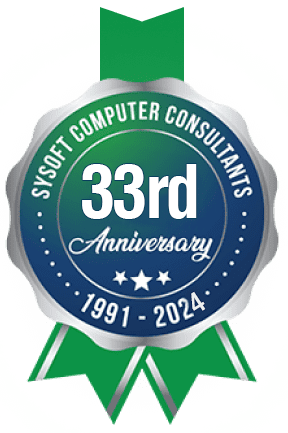Microsoft Windows Outage CrowdStrike Analysis Highlights Security Risks An unexpected [...]
Looking to Get on Top of Workflow Management?
Weighing the Pros and Cons of Microsoft’s SharePoint Workflow Platform

Implementing a platform to streamline business operations is a crucial part of maintaining a competitive edge in a modern business environment. Centralizing business processes and optimizing the business network allows business owners to save time and money.
Microsoft has long been at the forefront of business technology and their SharePoint workflow platform has a huge collection of project management tools that allow teams to be more connected and collaborative than ever before. However, as technological innovation moves forward, some business professionals are weighing the pros and cons of SharePoint in comparison to other platforms.
Microsoft SharePoint has two versions – both of which offer big benefits for businesses looking to centralize workflow management and optimize processes. SharePoint Server is Microsoft’s offline, on-premise version while SharePoint Online is the more recently released Cloud-version. Based on the unique needs and set up of each business, both versions help business owners optimize centralization, collaboration, and content management.
Let’s break down the key benefits in each category:
- Centralization
SharePoint has a variety of tools that help centralize the business platform to maximize efficiency. The Enterprise Portal Template, Site Directory and My Sites functions enable businesses to use a single platform for Internet, Intranet and Extranet based applications. This makes it easier than ever for employees to more efficiently navigate internal and external resources.
- Collaboration
SharePoint is designed specifically as a team collaboration software. The platform has a variety of built-in collaboration tools to help keep employees creatively connected. Tools like Docs, Tasks, and Calendar as well as Outlook integration capabilities improve communication strategies and help keep employees connected and up-to-date.
- Content Management
SharePoint lives up to the Microsoft reputation when it comes to access controls and content management. The platform has built-in business intelligence tools to help administrators control employee access and sharing capabilities and develop useful insight from user-data.
Furthermore, SharePoint has a collection of fully-integrated tools to help manage company content – both internally and on the web.
In addition to these top three categories, SharePoint offers business owners a variety of dynamic and beneficial features including:
- User dashboards
- Real-time document collaboration and editing
- Compliance management tools
- Enterprise wikis
- Tagging and noting tools
- Enterprise social networking via Yammer
- Basic project management tools
Now, let’s be clear: SharePoint is a great platform, used by big business names across the globe. However, like with any software, it’s important to understand specific business needs and the nature of the platform before making any implementation decisions. The last thing any business owner wants is to jump the gun and invest in a software contract only to realize it doesn’t align with the unique demands of their company.
To avoid this, let’s break down the key limitations of SharePoint for business:
- High Cost
Staying budget friendly is a major concern for any business trying to stay competitive in a crowded marketplace. That’s why it’s important to consider the price tag attached to SharePoint software platforms. When you add up the upfront price, maintenance fees, plus provisioning and upgrade costs, SharePoint Server can cost a business thousands of dollars for a single license.
While SharePoint Online negates some of these costs, companies that successfully implement SharePoint (online or off) often hire a dedicated specialist to configure, maintain and update the system. For the average small-to-mid-sized business, this added cost is unrealistic.
- Confusing & Complex Interface
There are many misconceptions that SharePoint is one single product. The reality is that SharePoint functions as a sort of ecosystem of product modules. This is great when it comes to versatility, but it doesn’t really translate as a user-friendly model.
In fact, a lot of professionals need to consult the Microsoft website for a rundown of what SharePoint is exactly. Many business owners also find the SharePoint ecosystem difficult to understand and navigate, which can result in lost business hours spent learning the ropes.
- High-Maintenance Infrastructure
Due to the complexity of the interface – especially in the server-based version – SharePoint requires a lot of time and IT resources for maintenance. In fact, when SharePoint was initially rolled out 43% of business users found system maintenance to be a huge chore while 46% said the management of content updates was a huge hassle.
- Too Much Product for the Average SMB
For some businesses, SharePoint simply offers way more features than necessary. For example, a company looking for a Cloud storage solution only would be overwhelmed by the robust and unnecessary features of the SharePoint intranet platform. So, for some SMBs, investing in such a dynamic platform can result in excessive and unnecessary costs.
The Leading Competitors
After a 2010 update, SharePoint was reported as being used by 78% of Fortune 500 companies, including the Associated Press, Toyota, UPS and Monsanto among other business giants. However, as Cloud innovation continues to sweep the business IT market, countless other workflow platforms are entering the game, many of which offer sleek and cost-effective alternatives. Let’s take a look at the top three SharePoint competitors that are giving Microsoft a run for its money:
G Suite
For business owners looking for a basic and affordable Cloud platform, G Suite is a great alternative to SharePoint. Previously known as Google for Work, G Suite offers a variety of email, file sharing, real-time document management and communication tools – much like SharePoint – for a much more affordable price.
Even better? G Suite is 100% Cloud-based, meaning employees can access the platform on any device from anywhere with an internet connection. Though, it should be noted that while G Suite has some administrator control features, they still have some work to do in terms of optimizing this area of the platform.
Huddle
Huddle claims itself to be the #1 SharePoint alternative and they may have a case. Designed specifically for large enterprise users and government agencies, Huddle has made waves in locking down some huge players like NASA, EPSON and the US Department of Defense.
Huddle offers a huge package of dynamic workflow management and collaboration tools and also provides wide-spread integration with other business apps like Salesforce and Centrify, among others. However, it should be noted that since Huddle is designed for large-scale enterprises, the price tag rings in even higher than SharePoint.
Box for Business
At face value, Box for Business may seem like a basic Cloud-storage solution. However, upon closer look, Box for Business serves as a powerful collaboration platform for businesses. The affordable platform goes beyond basic file storage and sharing to include a variety of collaboration, security, mobility and project management tools for SMBs.
The platform offers a variety of compliance and user control features; however, it doesn’t provide in-app document editing and creation capabilities. However, it is fully integrated with Office 365, so it allows Microsoft to fill the content creation gap.
Regardless of industry or size, a workflow management platform is a key strategy for the optimization of any business. Depending on the unique business processes and demands, professionals can choose from a wide variety of tools to make information flow easier and get projects done quicker. These are only a few of the SharePoint alternatives and business owners can find a variety of research online to narrow down the solution best for them.
Overall, SharePoint offers the most comprehensive and feature-rich platforms for business workflow management. However, for SMBs who are only looking for specific features, it may be smarter to check out some of the SharePoint alternatives that are popping up on the market. While these alternatives may not have the ‘fully-loaded’ style that SharePoint does, they offer cost-effective solutions for SMBs looking to fill more basic workflow and data management requirements.




